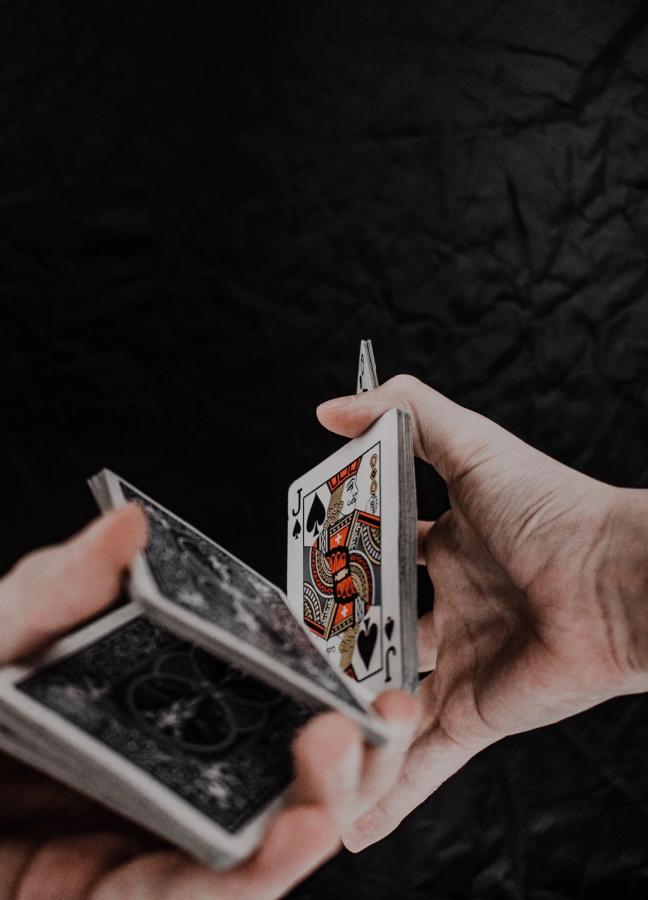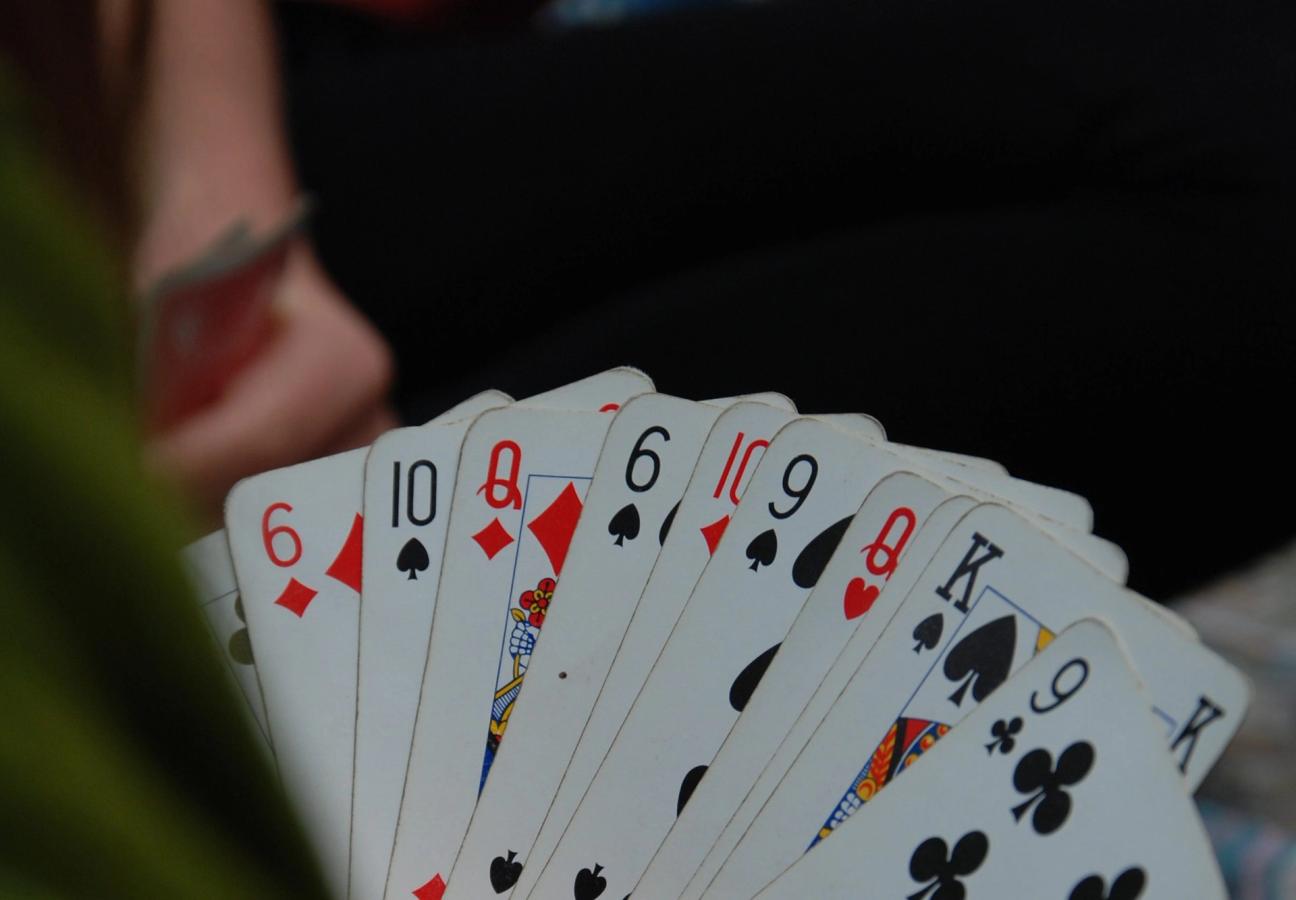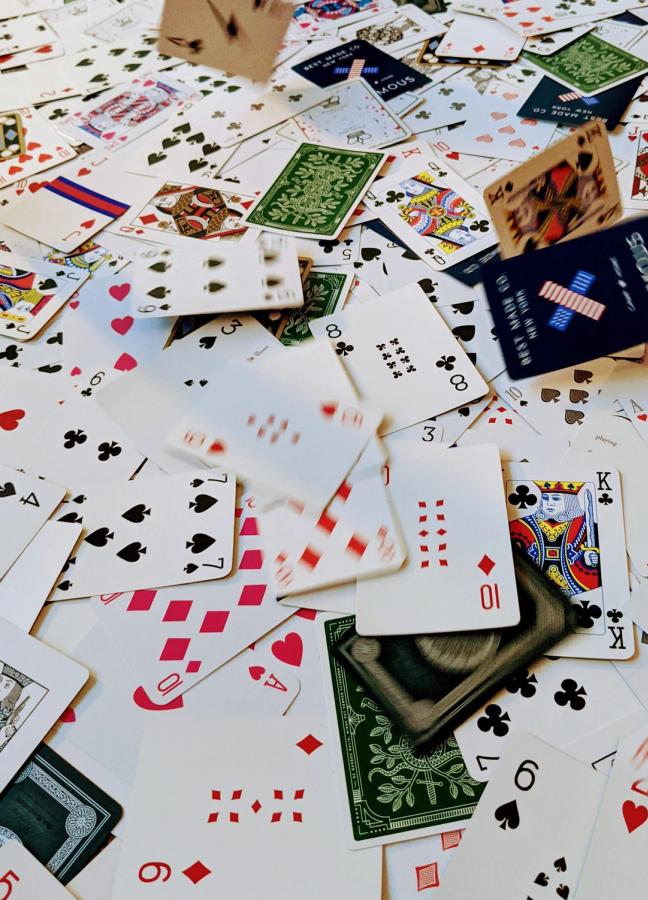
An ode to the playing card
Celebrating one of the world's great constants
Words: Jonathan Wells
Cards on the table; I think I have a bit of a gambling problem. Nothing too serious — I’m not worried about my kneecaps just yet. In fact, my problem has nothing to do with money. Come to think of it, it’s probably not even a real problem. I’ve simply found myself addicted to a single card game.
Not even a particularly good one, either. I’d love for it to be that I couldn’t stop counting cards while playing Blackjack — or spent most nights at illicit penthouse Poker games. But no. For all the demanding, daring games I could have got hooked on, I chose Gin Rummy.
That might not sound so bad. After all, some people’s card skills start and stop with Snap. But I own a lot of cards. More than any self-respecting Gin Rummy obsessive should (that is, if there were such a thing as a self-respecting Gin Rummy obsessive).

At last count, I lost count of how many packs and decks I have. But I find playing cards captivating. Yes, you can deal yourself into countless different games with them — but they’re also compact art collections, trick-playing tools and little libraries stuffed with with distinguishing motifs and historical quirks.
In 1940, for example, when the Nazis invaded Norway and Britain’s supply of cardboard was interrupted, Winston Churchill demanded that playing card manufacture be maintained at any cost. Good on him.
My first deck, I seem to remember, was snapped up as something of an afterthought — bought alongside a set of souvenir poker chips in a Las Vegas casino. I was 11, and desperate to master the Sybil Cut Flourish after I’d seen it in a film. (I still can’t do it).

But that hasn’t put me off picking up packs, and I’ve collected cards from all over the world. A bar in New York City. A street stall in Marrakech. An art gallery in Amsterdam. A ski resort in St Moritz. My Smythson deck is edged in gold, my Purdey cards feature shotgun-toting toffs and my Purling pack is detailed with hot-pink hearts and arty paint splatters. The latest set I specifically sought out became a gift from my girlfriend; an edgy deck from the US’s Best Made Company, with abstract picture cards and lightning bolts on the aces.
And each pack has a different story to tell. The Kings tend to pose the most puzzles. The King of Hearts, for example, is the only king without a moustache because of a centuries-old printing error. He’s also known as ‘The Suicide King’ because it looks like he’s stabbing himself through the head with his dagger.
The Ace of Spades also has a good secret up its sleeve. It tends to be larger and more ornate than other Aces because of a systematic duty tax imposed in 1711. Each pack needed to bear a stamp on the top card to show it had been paid, leading to most printers incorporating this into the Ace of Spades’ design.
I love the names given to different decks, too. Depending on the card stock, illustrations, brands and back designs, they’re given names as idiosyncratic and strangely elegant as types of apple. Some of my favourites: Red Fontaines; Gold Venexianas; White Centurions; and Scarlett Tally-Hos. They sound good enough to eat.

But perhaps the most remarkable thing about playing cards is their unparalleled ubiquity. They’re everywhere; one of the world’s great constants.
Think about it. You can find them in corner shops and five-star hotels. You can buy decks coated in plastic or foiled with 24-carat gold. Personally, I’ve played card games in both dingy student digs and at the Baccarat Chemin de Fer tables of Monte Carlo. And I reckon that’s range worth celebrating.
Want more objet d’art? Read our defence of stolen ashtrays…
Become a Gentleman’s Journal member. Find out more here.
